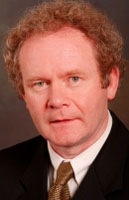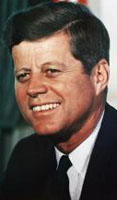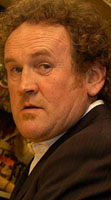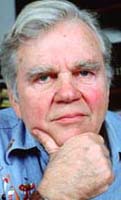Etymology:
Brünn, or Brno, is a Czech city and archaeological site where Upper Paleolithic skeletal remains were discovered, certain skull types among which were named after the site. These skulls belong to the general Aurignacid/Capellid variety of Upper Paleolithic human, and as such the application of the Brünn name to the Cro-Magnid type in question is somewhat probematic. However, we have decided to retain Coon's use of the term, as no synonym exists in the literature.
Other names:
[-]
Origins:
Mostly unreduced, typically dolicho- or mesocephalic and mostly depigmented Upper Palaeolithic survivor of Cro-Magnid provenience, closely related to the Dalo-Falid type; the two are distinguished by minor specializations only. The distinctive "Irish" features which characterize the Brünn are to some extent recalled in the Scandinavian Cro-Magnid stock. This is just as likely a result of convergence as of synapomorphy.
Description:
Like the Dalo-Falid type, Brünns are typically tall, broad-shouldered, and large-headed, with big bones and heavy musculature. In its unmixed form the type is usually quite easily distinguished from other local varieties, such as the shorter-statured, more gracileand more leptomorphic Keltic Nordid, with which it is cohabitant.
The modern Brünn inhabitants of western Ireland are mesocephalic to sub-brachycephalic, whereas their more easterly Cro-Magnid counterparts are typically long-headed. This is possibly due to the presence of a shorter-headed strain (such as Borreby) in the former, or to a local process of brachycephalization. The ancestral Cro-Magnid skull form was clearly dolichocranial.
The Brünn forehead is high and broad, and the face broad and mostly orthognathous. The malars are wide, the lower jaw deep and broad (yet usually not as broad as in the Dalo-Falid type), and the chin is prominent and typically clefted (the latter is foremost a male trait).
As with the other Cro-Magnid types, male Brünn facial features can be very ruggedly masculine, often with exaggeratedly pronounced browridges and deep jaws; the degree of sexual dimorphism is high, and a corresponding ruggedness is not usuallyobserved among the females. As with Borreby women, these are typically rounder-featured and larger-breasted than the European mean.

The nose is moderately large, mesorrhine to leptorrhine, and straight in profile, with a considerable concave minority. The tip is somewhat thick, and frequently upturned. The mouth is large and the lines around the oral cavity are deeply drawn, while the lips are moderately thick and little everted. Theupper lip tends characteristically towards length and convexity.
The skin, typically freckled, is very fair, and does not easily tan. The hair is brown and wavy, and often rufous (the Irish Brünn is known for its frequent red-headedness). Curly hair seems to be an Irish specialty. The eyes are light-mixed blue in the great majority of cases.
Stereotypically "Irish" features are known
to have been exaggerated in caricature.
Illustrations:
Examples from The Races of Europe (Carleton S. Coon 1939) (Ireland):




(Cork) (Clare) (Clare) (Leitrim;
approaching Nordid)
Celebrity examples:




Martin McGuinness John F. Kennedy Colm Meaney Andy Rooney
(Ireland) (USA) (Ireland) (USA)
Further examples (Irish Americans):



Geographical distribution:
Western Ireland - Cork and Kerry in particular - houses the only living Brünn population in the world today, and this element accounts for nearly half of the Irish racial composition on the whole.
The Irish Brünn type has added an important increment to the Icelandic population, which already contains a predominant Cro-Magnid strain through the presence of the western Norwegian Trønder type of Viking descent. An aboriginal Brünn-like population has also merged with the Germanic settlement in the Frisian and northwestern German country, where its descendants take the form of an altered Hallstatt Nordid, a type referred to as Anglo-Saxon. This mixed strain has played an important role in determining England's present racial situation.
Related or similar types:
- Dalo-Falid
- Trønder
- Anglo-Saxon
Brünn, or Brno, is a Czech city and archaeological site where Upper Paleolithic skeletal remains were discovered, certain skull types among which were named after the site. These skulls belong to the general Aurignacid/Capellid variety of Upper Paleolithic human, and as such the application of the Brünn name to the Cro-Magnid type in question is somewhat probematic. However, we have decided to retain Coon's use of the term, as no synonym exists in the literature.
Other names:
[-]
Origins:
Mostly unreduced, typically dolicho- or mesocephalic and mostly depigmented Upper Palaeolithic survivor of Cro-Magnid provenience, closely related to the Dalo-Falid type; the two are distinguished by minor specializations only. The distinctive "Irish" features which characterize the Brünn are to some extent recalled in the Scandinavian Cro-Magnid stock. This is just as likely a result of convergence as of synapomorphy.
Description:
Like the Dalo-Falid type, Brünns are typically tall, broad-shouldered, and large-headed, with big bones and heavy musculature. In its unmixed form the type is usually quite easily distinguished from other local varieties, such as the shorter-statured, more gracileand more leptomorphic Keltic Nordid, with which it is cohabitant.
The modern Brünn inhabitants of western Ireland are mesocephalic to sub-brachycephalic, whereas their more easterly Cro-Magnid counterparts are typically long-headed. This is possibly due to the presence of a shorter-headed strain (such as Borreby) in the former, or to a local process of brachycephalization. The ancestral Cro-Magnid skull form was clearly dolichocranial.
The Brünn forehead is high and broad, and the face broad and mostly orthognathous. The malars are wide, the lower jaw deep and broad (yet usually not as broad as in the Dalo-Falid type), and the chin is prominent and typically clefted (the latter is foremost a male trait).
As with the other Cro-Magnid types, male Brünn facial features can be very ruggedly masculine, often with exaggeratedly pronounced browridges and deep jaws; the degree of sexual dimorphism is high, and a corresponding ruggedness is not usuallyobserved among the females. As with Borreby women, these are typically rounder-featured and larger-breasted than the European mean.

The nose is moderately large, mesorrhine to leptorrhine, and straight in profile, with a considerable concave minority. The tip is somewhat thick, and frequently upturned. The mouth is large and the lines around the oral cavity are deeply drawn, while the lips are moderately thick and little everted. Theupper lip tends characteristically towards length and convexity.
The skin, typically freckled, is very fair, and does not easily tan. The hair is brown and wavy, and often rufous (the Irish Brünn is known for its frequent red-headedness). Curly hair seems to be an Irish specialty. The eyes are light-mixed blue in the great majority of cases.
Stereotypically "Irish" features are known
to have been exaggerated in caricature.
Illustrations:
Examples from The Races of Europe (Carleton S. Coon 1939) (Ireland):




(Cork) (Clare) (Clare) (Leitrim;
approaching Nordid)
Celebrity examples:




Martin McGuinness John F. Kennedy Colm Meaney Andy Rooney
(Ireland) (USA) (Ireland) (USA)
Further examples (Irish Americans):



Geographical distribution:
Western Ireland - Cork and Kerry in particular - houses the only living Brünn population in the world today, and this element accounts for nearly half of the Irish racial composition on the whole.
The Irish Brünn type has added an important increment to the Icelandic population, which already contains a predominant Cro-Magnid strain through the presence of the western Norwegian Trønder type of Viking descent. An aboriginal Brünn-like population has also merged with the Germanic settlement in the Frisian and northwestern German country, where its descendants take the form of an altered Hallstatt Nordid, a type referred to as Anglo-Saxon. This mixed strain has played an important role in determining England's present racial situation.
Related or similar types:
- Dalo-Falid
- Trønder
- Anglo-Saxon